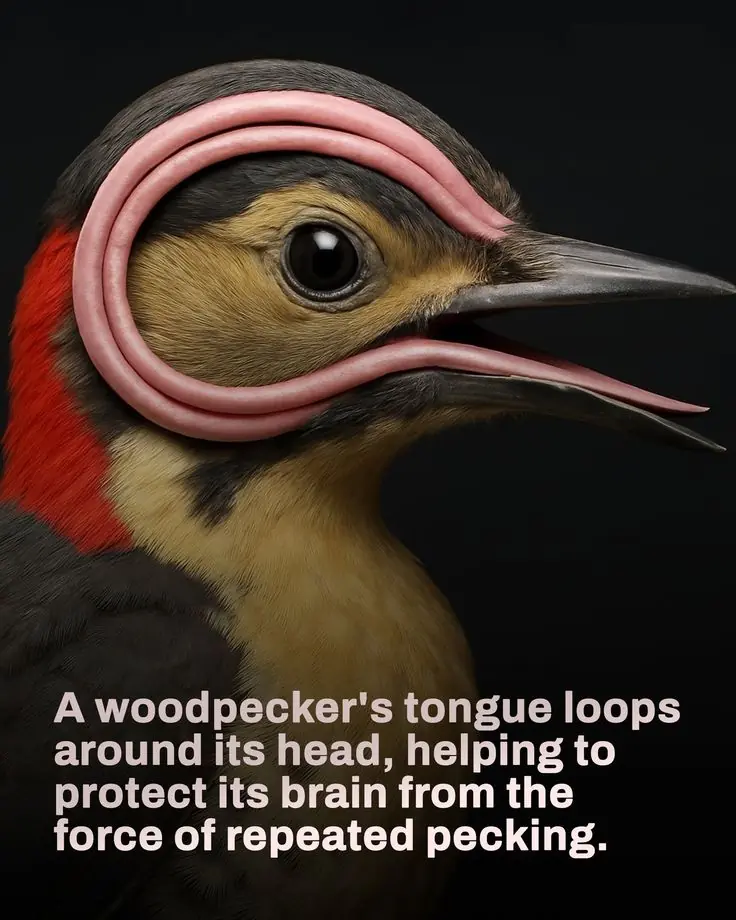
Tiny Fish, Big Noise: The Fingernail-Sized Danionella cerebrum Outsounds an Elephant
In the world of animal superlatives, size often defines power — but one tiny fish is shattering that perception. Meet Danionella cerebrum, a transparent, fingernail-sized freshwater fish from Myanmar that has just made headlines for producing sounds over 140 decibels — louder than an elephant’s trumpet and rivaling the roar of a jet engine.
A Remarkable Discovery
Measuring only 12 millimeters in length, Danionella cerebrum might be one of the smallest vertebrates known to science, but its voice is anything but small. Researchers found that the males of this species use a highly specialized sound-producing system to communicate, especially in murky waters where visibility is poor.
How the Tiny Powerhouse Works
The fish’s sound production relies on a unique drumming mechanism. A specially adapted rib and a piece of cartilage, driven by a fatigue-resistant muscle, slam into the swim bladder. This creates intense pulses that can travel through the water with surprising clarity and force.
Scientists believe these sounds are used for social communication, possibly in mating displays or territorial disputes. The extraordinary volume ensures the message is heard — even in noisy, crowded aquatic environments.
Breaking the Decibel Barrier
To put its feat into perspective:
-
Danionella cerebrum can produce >140 dB near its body.
-
An African elephant’s trumpet peaks at around 110 dB.
-
A rock concert might reach 120 dB.
-
A jet engine from 100 meters away registers about 140 dB.
In other words, this tiny fish is competing with some of the loudest natural and man-made sounds on Earth.
Why It Matters
The discovery, published in PNAS in early 2024, doesn’t just reveal another animal oddity — it offers important insights for bioacoustics and evolutionary biology. Understanding how such a small animal produces such a large sound could inspire innovations in underwater communication technology.
Additionally, Danionella cerebrum is already a valuable model in neuroscience research because of its transparent body and minimal brain size. Now, its acoustic abilities add another layer to its scientific significance.
A Big Voice in a Small Package
This tiny vertebrate proves that nature often hides its most astonishing adaptations in plain sight — or, in this case, beneath the surface of a slow-moving stream. Danionella cerebrum reminds us that even the smallest creatures can make the biggest noise.
News in the same category


Nature’s Engineering Marvel: The Woodpecker’s Incredible Built-In Safety Mechanism

What To Say After Kissing

5 Clear Signs Someone Is Falling In Love With You Read More Here... https://themindsjournal.com/signs-someone-falling-love/?ssp_iabi=1683094968975

5 Hard Realities About Being a Beautiful Woman

The Secrets Your Thumb Shape Reveals About Your Personality

How True Love Shows Itself During Intimacy

Optical illusion reveals what kind of lover you are

The Chocolate You Pick Reveals What Kind Of Woman You Are

Raccoons Can Remember You—For Over Three Years

The Surprising Power of Scent: How Male Underarm Sweat May Affect Women's Hormones and Mood

Why Do Men Kneel on One Knee When Proposing?

The Eagle’s Response: A Powerful Lesson in Rising Above

Reasons why women cheat, according to a relationship expert

What is High-Functioning Alcoholism?

What Do You See in the Image? A Goat or an Eagle? Your Brain Might Decide!

Why Do Dogs Smell Certain Parts of the Body? Uncovering the Mystery

🐱 What Does It Mean When Your Cat Shows You a Mouse?
News Post

Unveiling the Unthinkable: How a Father’s Cru el Plan Almost Destr0yed His Daughter's Life

Mint Chocolate Oreo Trifle

Blueberry Cheesecake Milkshake

Blueberry & Vanilla Swirl Ice Cream Sundae

Elephants: Nature’s Gentle Giants with Surprising Swimming Skills

Dad Showed Up To My Graduation Straight From A Night Shift

Hot Dogs: Find 6 Differences

Mom Leaves a Note on Her “Disrespectful” Son’s Door—Now It’s Going Viral

Natural Childbirth: An Experience Without Anesthesia

Natural Antibiotic: Home Remedy to Relieve Sore Throat

12 Surprising Powers of Calendula officinalis You’ll Wish You Knew Sooner

🥔 Crispy Parmesan Potato Wedges

🧄🧀 Creamy Garlic Parmesan Meatballs

The One Sleep Hack That Could Change Everything: Why Your Bedside Matters

Royal Chocolate Vanilla Sundae

Strawberry Meadow Cake

Rose Garden Strawberry Sundae

Luxury Chocolate & Gold Sprinkle Ice Cream Sundae 🍨✨

